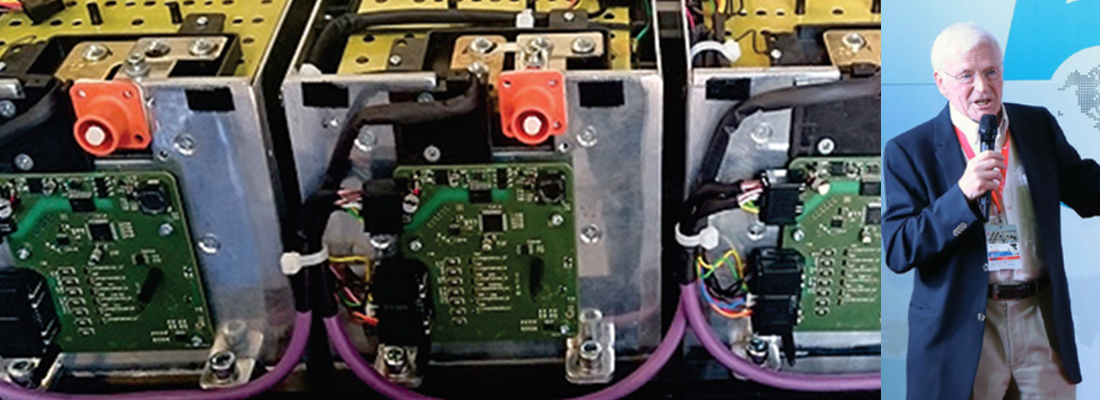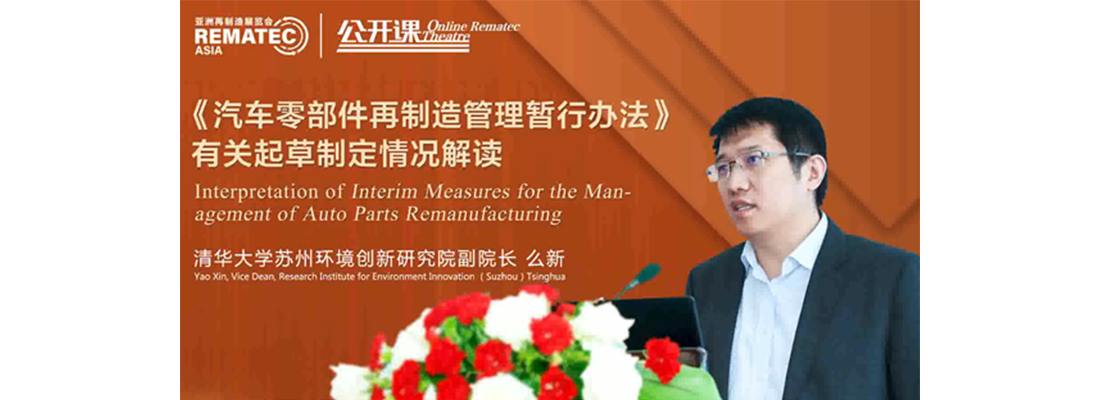Data gathering & IoT in the remanufacturing field – part two
Tuesday, 15 April 2025
In this part two we will talk about IoT, explaining this technology and how it integrates in the remanufacturing field.
IoT enables real-time monitoring of components and systems throughout their lifecycle. Through embedded sensors and connected devices, data on wear, usage patterns, and operational anomalies can be collected continuously. In the context of remanufacturing, this information is invaluable. It allows manufacturers and remanufacturers to assess the residual value and usability of components before they even enter the facility. For example, IoT-connected parts can provide data on mileage, temperature fluctuations, and performance metrics, enabling accurate diagnostics and reducing the time spent on manual inspection.
In addition, predictive analytics powered by IoT data helps in forecasting which components are most likely to fail or degrade, thus streamlining the inventory of parts that require remanufacturing. This proactive approach significantly reduces waste and enhances resource allocation. In many facilities, IoT systems are already being used to support decision-making regarding disassembly priorities, parts classification, and refurbishment paths.
Once parts are inside the remanufacturing facility, IoT continues to add value. Connected tools and machines can log every step of the process, from cleaning and machining to final testing and certification. This ensures a traceable, standardized workflow, improving both quality assurance and compliance with industry regulations. Data collected throughout the remanufacturing cycle can also be used for continuous improvement, enabling organizations to analyse bottlenecks, monitor productivity, and identify inefficiencies that would otherwise go unnoticed.
Moreover, the IoT infrastructure facilitates enhanced communication across stakeholders in the supply chain. Remanufacturers, OEMs, logistics providers, and customers can all access real-time data through secure cloud platforms, fostering transparency and coordination. This is particularly relevant for managing reverse logistics—one of the most challenging aspects of remanufacturing—where timely and condition-sensitive information is crucial for efficient component retrieval and transportation. IoT also supports the automation and digitization of documentation processes. Barcode scanners, RFID tags, and smart labels allow each component to be tracked digitally throughout its journey, from decommissioning to reinstallation. This digital traceability is especially useful for quality control, warranty management, and ensuring that remanufactured parts meet original equipment specifications. It also facilitates compliance with environmental and safety regulations by maintaining verifiable records of all processes and materials used.
IoT refers to the technology infrastructure—sensors, connected devices, and networks—that enables automated and real-time data collection, transmission, and interaction between physical objects and digital systems.
Think of data gathering as the "what", and IoT as the "how" that makes it smarter, faster, and more scalable.
The role of IoT in the automotive remanufacturing field
The integration of the Internet of Things (IoT) in the automotive remanufacturing industry is redefining traditional processes, introducing a new level of efficiency, traceability, and data-driven decision-making. IoT technology is now a key enabler in optimizing every phase of the remanufacturing lifecycle—from the collection of end-of-life components to their reconditioning, testing, and reintegration into the supply chain. As automotive systems become more complex, particularly with the rise of electric and hybrid vehicles, the need for intelligent, connected solutions to manage and monitor the remanufacturing process is more critical than ever.IoT enables real-time monitoring of components and systems throughout their lifecycle. Through embedded sensors and connected devices, data on wear, usage patterns, and operational anomalies can be collected continuously. In the context of remanufacturing, this information is invaluable. It allows manufacturers and remanufacturers to assess the residual value and usability of components before they even enter the facility. For example, IoT-connected parts can provide data on mileage, temperature fluctuations, and performance metrics, enabling accurate diagnostics and reducing the time spent on manual inspection.
In addition, predictive analytics powered by IoT data helps in forecasting which components are most likely to fail or degrade, thus streamlining the inventory of parts that require remanufacturing. This proactive approach significantly reduces waste and enhances resource allocation. In many facilities, IoT systems are already being used to support decision-making regarding disassembly priorities, parts classification, and refurbishment paths.
Once parts are inside the remanufacturing facility, IoT continues to add value. Connected tools and machines can log every step of the process, from cleaning and machining to final testing and certification. This ensures a traceable, standardized workflow, improving both quality assurance and compliance with industry regulations. Data collected throughout the remanufacturing cycle can also be used for continuous improvement, enabling organizations to analyse bottlenecks, monitor productivity, and identify inefficiencies that would otherwise go unnoticed.
IoT and circular economy
Another critical benefit of IoT in automotive remanufacturing lies in its support for circular economy practices. By capturing and utilizing data throughout the product lifecycle, companies can extend the life of automotive components, reduce dependency on raw materials, and promote sustainable manufacturing models. For instance, IoT data enables manufacturers to build digital twins of key components, allowing real-time condition monitoring and more accurate remanufacturing decisions based on actual usage rather than estimated wear.Moreover, the IoT infrastructure facilitates enhanced communication across stakeholders in the supply chain. Remanufacturers, OEMs, logistics providers, and customers can all access real-time data through secure cloud platforms, fostering transparency and coordination. This is particularly relevant for managing reverse logistics—one of the most challenging aspects of remanufacturing—where timely and condition-sensitive information is crucial for efficient component retrieval and transportation. IoT also supports the automation and digitization of documentation processes. Barcode scanners, RFID tags, and smart labels allow each component to be tracked digitally throughout its journey, from decommissioning to reinstallation. This digital traceability is especially useful for quality control, warranty management, and ensuring that remanufactured parts meet original equipment specifications. It also facilitates compliance with environmental and safety regulations by maintaining verifiable records of all processes and materials used.
IoT plays a crucial role in the transition to BEVs
The transition to electric vehicles (EVs) presents a unique set of challenges and opportunities for remanufacturing, and IoT plays a crucial role in this context. EV components such as batteries, electric motors, and power electronics require specialized handling and monitoring. IoT-based sensors can track the state of health (SoH) of battery packs, detect thermal anomalies, and measure degradation levels—data that is essential for evaluating the feasibility of remanufacturing these high-value components. Through IoT, battery second-life applications and end-of-life recycling decisions can be made more effectively, supporting both economic and environmental objectives. Despite its advantages, the implementation of IoT in automotive remanufacturing is not without challenges. Data interoperability between different systems and manufacturers remains a key barrier, particularly in a fragmented industry with a mix of legacy and modern technologies. Cybersecurity is also a major concern, given the sensitive nature of operational and customer data being transmitted and stored across connected devices. Moreover, the initial cost of integrating IoT infrastructure and training personnel can be significant, although long-term efficiency gains tend to justify the investment. Ultimately, IoT is transforming the automotive remanufacturing landscape by enabling smarter, data-driven operations that enhance quality, sustainability, and cost-effectiveness. As the automotive industry continues to evolve towards electrification, automation, and digitalization, IoT will play an increasingly vital role in bridging the gap between used component recovery and high-quality remanufactured products. For organizations aiming to lead in sustainable mobility and circular manufacturing, investing in IoT capabilities within remanufacturing is not just beneficial—it is essential.What's the difference between data gathering and IoT?
Data Gathering refers to the process of collecting information—manually or digitally—about parts, systems, usage, and performance for analysis or decision-making.IoT refers to the technology infrastructure—sensors, connected devices, and networks—that enables automated and real-time data collection, transmission, and interaction between physical objects and digital systems.
Think of data gathering as the "what", and IoT as the "how" that makes it smarter, faster, and more scalable.
Receive the best newsletter on remanufacturing - straight to your inbox!





